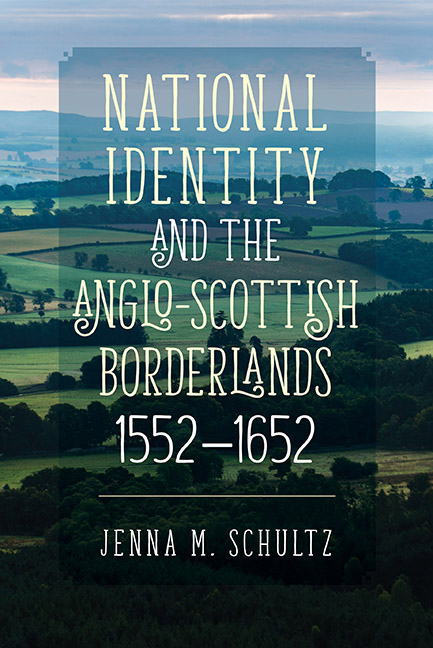Book contents
- Frontmatter
- Dedication
- Contents
- List of Illustrations
- Acknowledgements
- List of Abbreviations
- Conventions
- Chronology
- Map
- Introduction
- 1 Administration
- 2 Borderers
- 3 Border Towns and Fortifications
- 4 Moments of Crisis
- Conclusion
- Appendix 1 List of Wardens, 1552–1603
- Appendix 2 List of Lords Lieutenant
- Bibliography
- Index
- STUDIES IN EARLY MODERN CULTURAL, POLITICAL AND SOCIAL HISTORY
3 - Border Towns and Fortifications
Published online by Cambridge University Press: 06 September 2019
- Frontmatter
- Dedication
- Contents
- List of Illustrations
- Acknowledgements
- List of Abbreviations
- Conventions
- Chronology
- Map
- Introduction
- 1 Administration
- 2 Borderers
- 3 Border Towns and Fortifications
- 4 Moments of Crisis
- Conclusion
- Appendix 1 List of Wardens, 1552–1603
- Appendix 2 List of Lords Lieutenant
- Bibliography
- Index
- STUDIES IN EARLY MODERN CULTURAL, POLITICAL AND SOCIAL HISTORY
Summary
Afront the bound of Scottish ground, where staid the furious broile
Of English warres; and Nations both were put to equall toile.
Now won, then lost, a thousand turnes it felt of fortunes will,
After so many miseries, wonder, it standeth still …
And now her ancient honour she doth vaunt in happy plight,
When to her Soveraigne Lord she yeelds all service due by right.
Whose blessed Crowne united hath great Britain now at last,
Whereby her head she lifts on high, since quarrels all be past.
In the 1610 version of William Camden's Britannia, Scottish poet John Johnston wrote a hopeful message of peace for a united Great Britain. Specifically, peaceful relations in the Borders and especially at Berwick-upon-Tweed, which was the subject of his praises. However, after the regnal union, there remained separation between the two kingdoms. The border itself was not simply a political line, but a deeply rooted marker of territorial division between England and Scotland. Though King James VI/I attempted to eliminate the borderline, it was still prominent thanks to the continued presence of local administrators, borderers and border towns and fortifications.
The previous two chapters have primarily discussed the individuals, surnames and officials who lived in the Borders and interacted with their neighbours in the opposite kingdom. The people who made up the populations of the region represented the divisions that existed between England and Scotland from 1552 to 1652. The king had attempted to transform the organization of the jurisdictions, administrative policies and cultural practices, but with limited success. Instead, the actions of borderers and officials continued to highlight the existence of the borderline long after the king had proclaimed the region to be the Middle Shires. Pacification commissions, forced removals and enhanced crown involvement did not implement the king's union policies effectively, nor did it create a broader British identity. This was due in part to the resilience of local practices and interactions that held the opposite kingdom to be the enemy, and the perceived understandings of the territorial limits of each kingdom. Combined, these factors served to uphold national identities above all other allegiances and affiliations.
- Type
- Chapter
- Information
- National Identity and the Anglo-Scottish Borderlands, 1552–1652 , pp. 152 - 209Publisher: Boydell & BrewerPrint publication year: 2019

